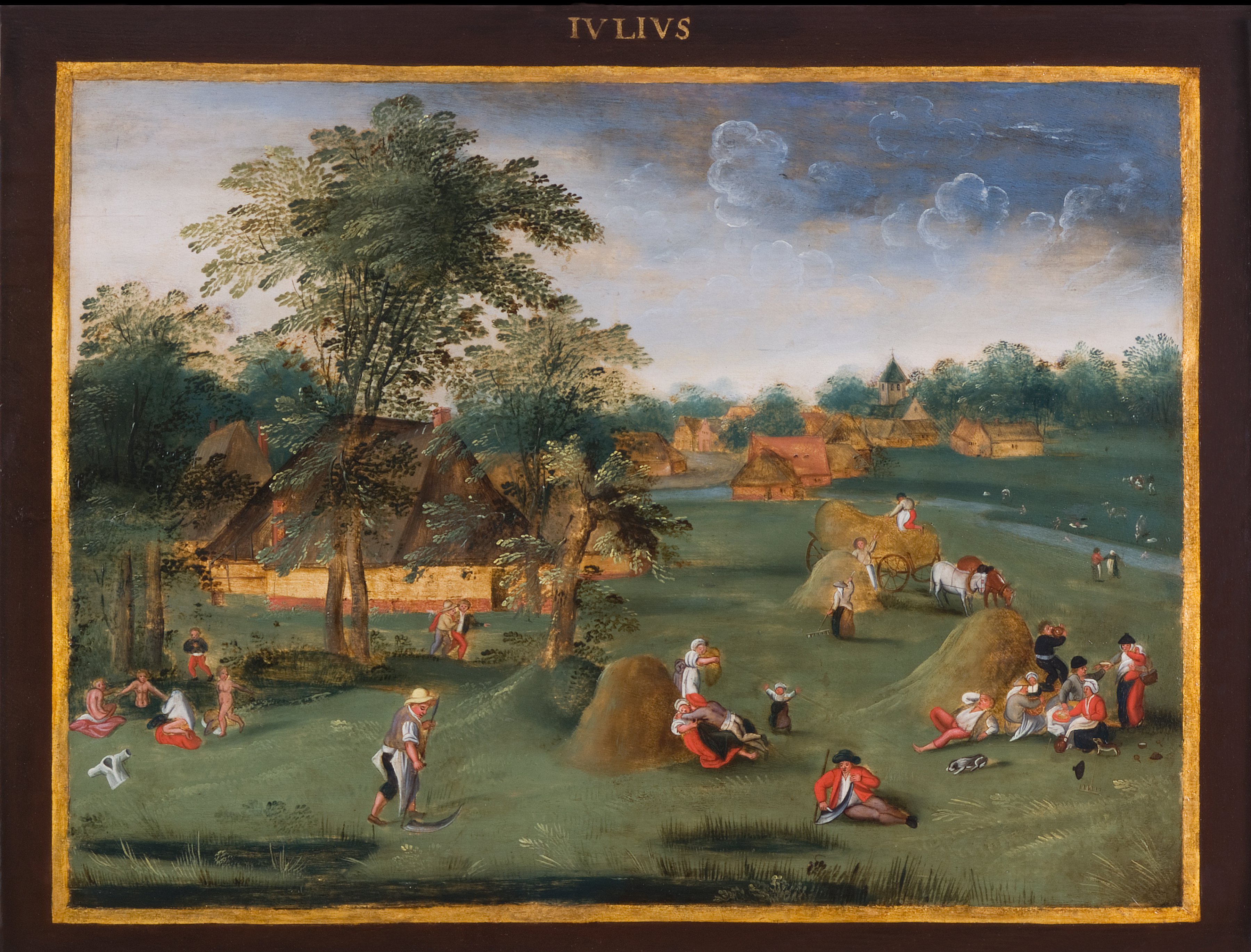3. The Four Seasons: July, by Abel Grimmer
 Abel Grimmer (attributed to), Four Seasons: July, early 17th century, H 49.5 X W 64.1 cm, oil on panel
Abel Grimmer (attributed to), Four Seasons: July, early 17th century, H 49.5 X W 64.1 cm, oil on panel
One of my favourites in St John's collection is the series of pictures, usually known as the Four Seasons, and currently attributed to the Flemish painter Abel Grimmer (ca. 1570 - after 1620).
The title is, in fact, a bit of a misnomer. Grimmer did paint a number of seasonal paintings, some of them in cycles of four seasons, some in cycles of twelve months, and the four pictures that we have are entitled 'January', 'March', 'July' and 'October', as we can see from Latin inscriptions in the border. So they must have been part of a series of twelve dispersed at an early date – whoever purchased these four perhaps indeed wanted just one representation of each of the four seasons. By the time they joined the College's collection (first recorded in 1728), there were only these four, and the other eight have sadly disappeared without trace. We would love any information if you happen to have it!
In anticipation of the summer, let us look at the wonderful scene of haymaking in the scene of July (you can also find January, March and October on the Art UK website). For a long time, these pictures were attributed loosely to 'the school of Brueghel', and the influence of Pieter Brueghel the Elder (who was a major influence on the work of Abel Grimmer and his father Jacob, some of whose pictures were direct imitations), and his own great Seasons of the Year, will be obvious, in the choice of subject, in presenting the flow of seasons through the changing human activities, and in the vivid interplay of colours. Indeed, the activity Brueghel himself had chosen for the months of June and July was also haymaking; pictures of Grimmer form part of the same story of the discovery of the world of ordinary work by the Flemish oil painters. Genre scenes are here no longer confined to miniatures, as they used to be in an earlier period, but treated as central subjects on large wooden panels of their own – we can all, I think, subscribe to this message of the dignity of work and everyday life.
The differences with Brueghel (and influences of other Flemish painters from the older generation, such as Lucas Gassel, also once suggested as the painter, or Hans Bol) are also quite pronounced, though. Grimmer's peasants are rather more genteel creatures than Brueghel's, and we do not get quite the same sense of life's difficulties and seriousness. The whole ambience is so enchantingly pleasant that it is difficult to imagine these people being particularly worn down by the harvesting work at any point. The greener palette creates a more relaxed feeling than in Brueghel's Hay Harvest, and the dynamic of the picture is created more by the grass and the trees slightly swayed by the wind than by the movement of people. But while the scene has less of a social message, we can still be drawn into this lazy summer afternoon and the evident enjoyment of life shared by the workers, the children and the dogs. As we look forward to the summer months, and perhaps being able to relax on the grass ourselves (while observing public health guidelines!), I hope you will enjoy it as much as I do.
 Dr Georgy Kantor, Tutorial Fellow in Ancient History and Keeper of the Pictures
Dr Georgy Kantor, Tutorial Fellow in Ancient History and Keeper of the Pictures